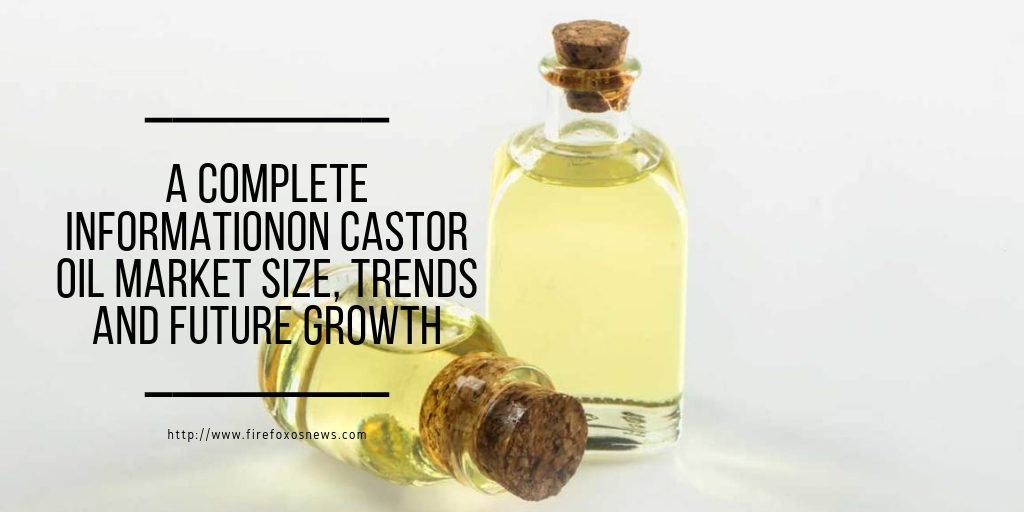A Complete Information On Castor Oil Market Size, Trends And Future Growth

Castor oil is a popular vegetable oil that is produced by the pressing of castor beans and appears as a colorless or light yellow liquid with a distinct odor and taste with a boiling point of 595 °F (313 °C). The use of castor oil can be traced back to ancient Egypt in 4000 BC, where castor oil was used by doctors to protect eyes from any irritation.
There are several features of castor oil which have led to its popularity, including high viscosity, good thermal conductivity, high density, and high pour point. Applications for castor oil and its derivatives include use in the manufacturing of soaps, lubricants, paints, hydraulic and brake fluid, dyes, inks, coatings, waxes, polishes, cold resistant plastics, nylons, perfumes, and pharmaceuticals. In cases of ingestion, castor oil has been found to have a laxative effect.
Market Size
The global castor oil market size is expected to reach a value of $1.8 billion by 2020, with major sourcing regions being India, China, and Brazil. Globally, India is the largest producer of castor oil, contributing to around 90 percent of the total production. While Brazil has a considerable production of castor oil, it is also a major consumer due to which the domestic supply meets only 72 percent of the demand. Due to the wide applications of castor oil across industries, the market size is expected to expand at a steady pace.
Market Trends
There are several trends affecting the castor oil market:
Castor Oil As A Biofuel: The fluctuating prices and the limited supply of non-renewable resources of fossil fuels such as petroleum are driving demand for alternative biofuels which can be used in automobiles, generators, heavy machinery and other equipment. With low volatility and high viscosity, castor oil is being considered as a superior non-edible crop that can be used in producing biodiesel. The process of producing biodiesel takes place by the transesterification of castor oil by means of ethanol or methanol.
Castor Oil As A Raw Material: Apart from the wide uses of castor oil in its typical format, it is also becoming an important bio-based raw material for industrial applications and is considered to be a potential alternative to petroleum-based chemicals. As a raw material, castor oil is used in the production of adhesives, machine oils, refrigeration lubricants, and others.
Castor Oil As A Food Additive: In comparison to other vegetable oils, castor oil has been noted to be a healthier and less expensive option, boosting its popularity in the food and beverage industry. Although the laxative property of castor oil is a constraint, it is used in the form of food additives, flavorings, mold inhibitors, and packaging.
Market Growth
The global market for castor oil is set to grow at a rapid pace driven by the demand by multiple industries and an increase in applications of castor oil and its derivatives. The prices are likely to hike due to a temporarily reduced supply owing to seasonal sowing; however, the prices are expected to stabilize soon after with new supply additions. Global imports for castor oil have been increasing due to low prices and numerous applications.
Castor oil is a versatile vegetable oil that has been in use for centuries, and more applications continue to be developed. The market is broadly divided into exporting and importing countries, with India being the largest exporter of castor oil at a global level. The compatibility of castor oil as a replacement for petroleum chemicals is a major driving factor for the market, while seasonal production limitations act as a constraint.
